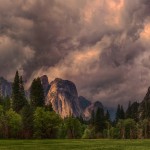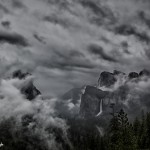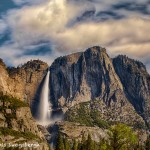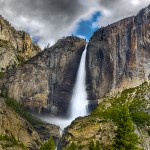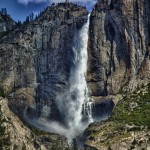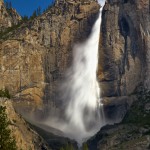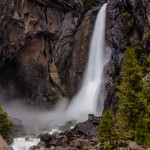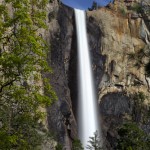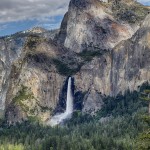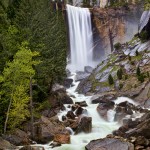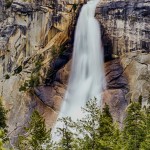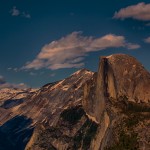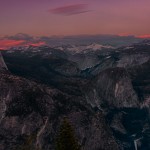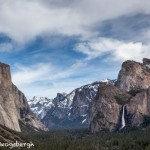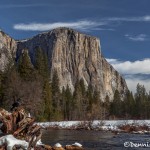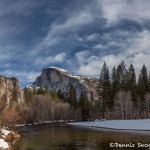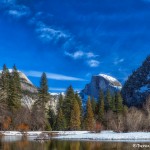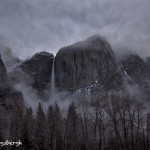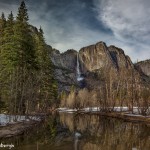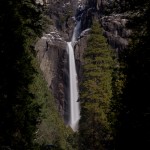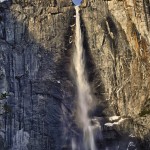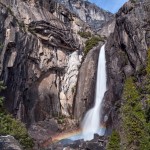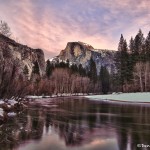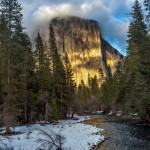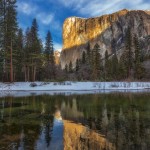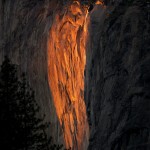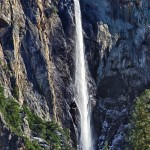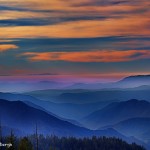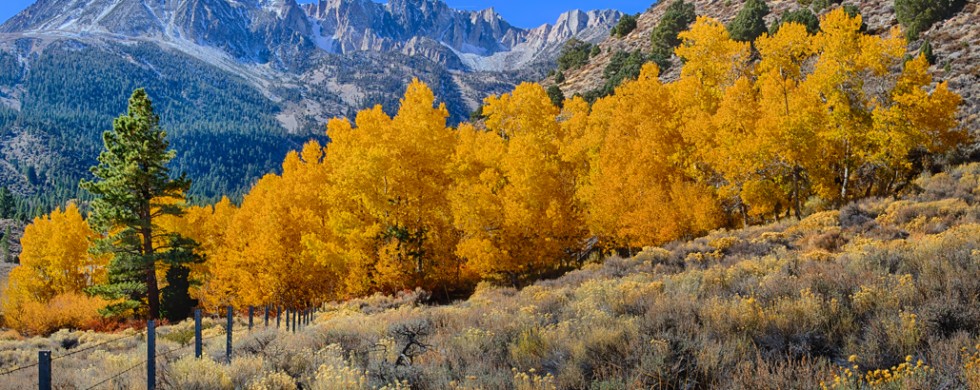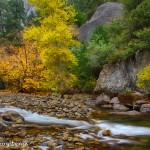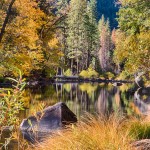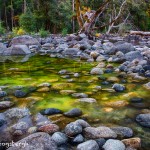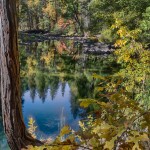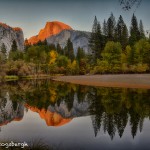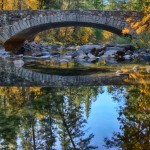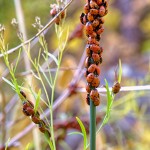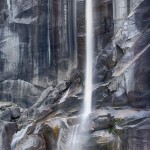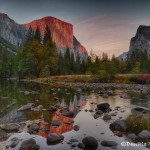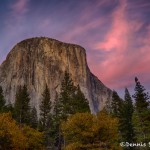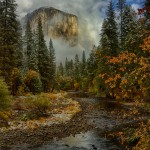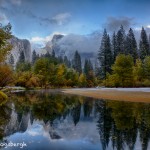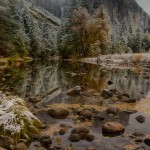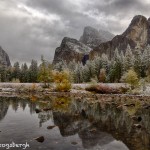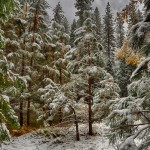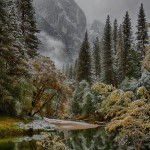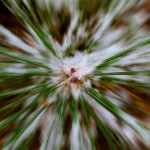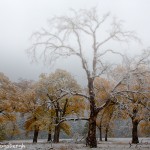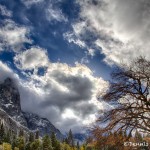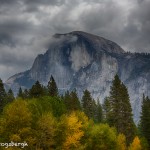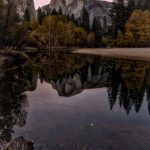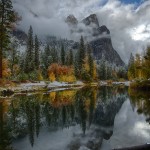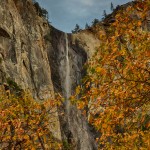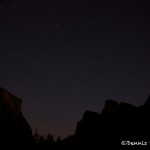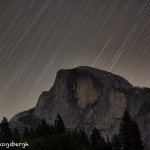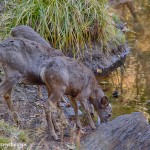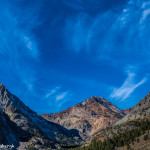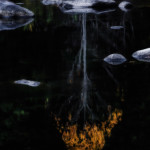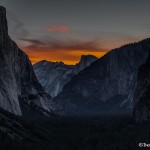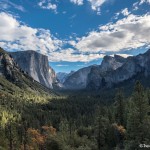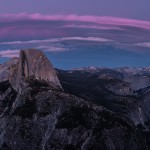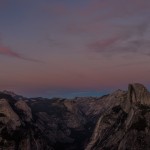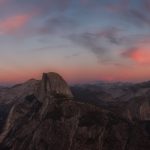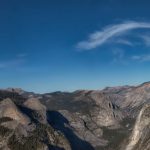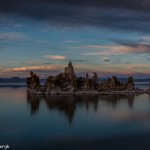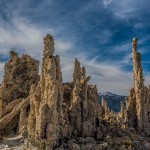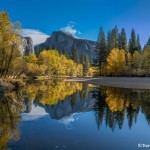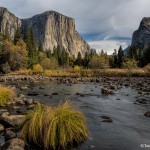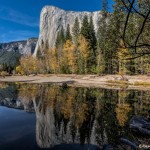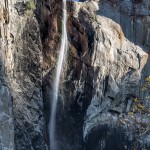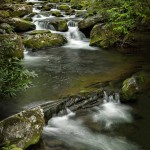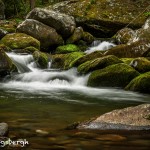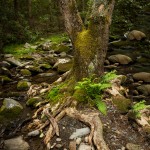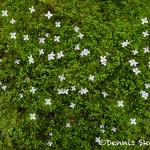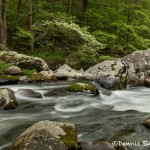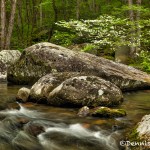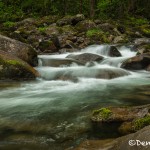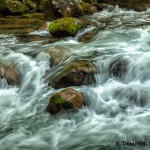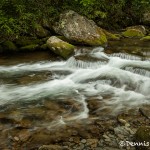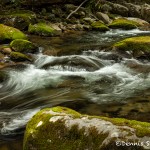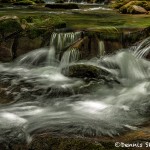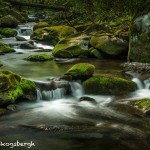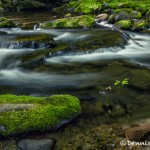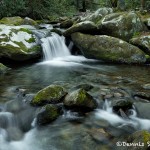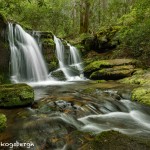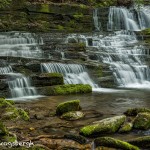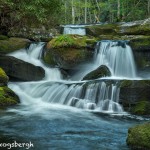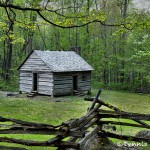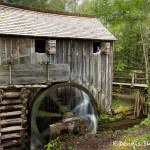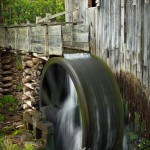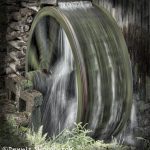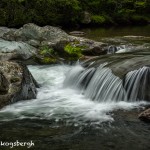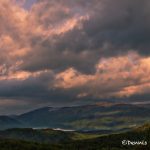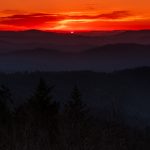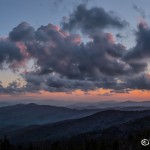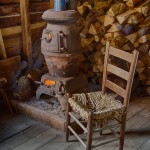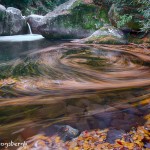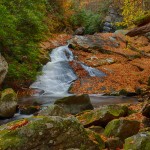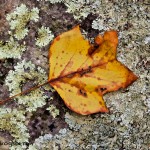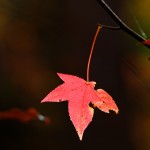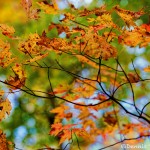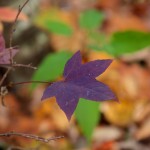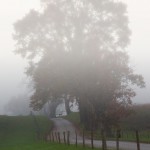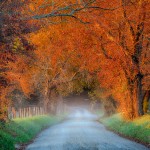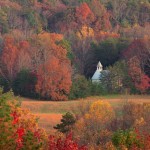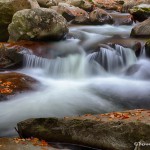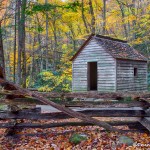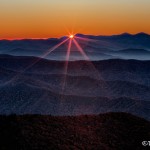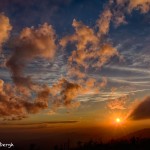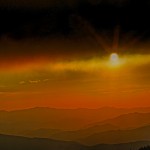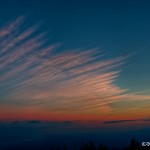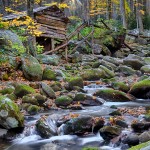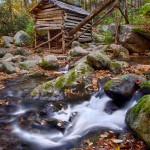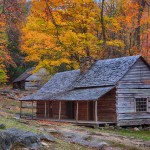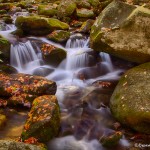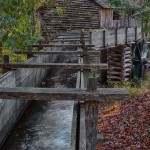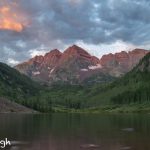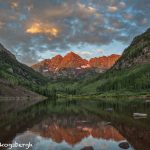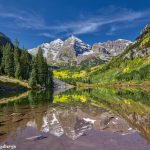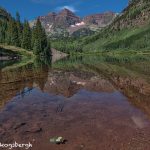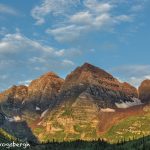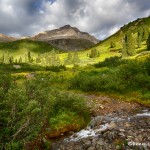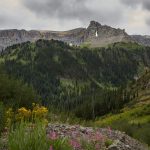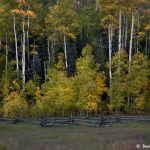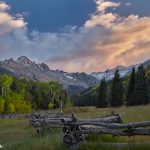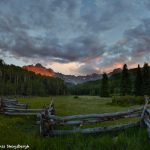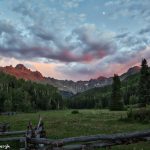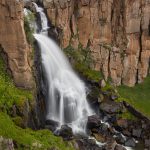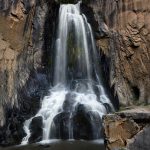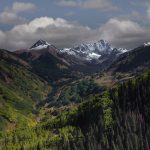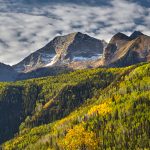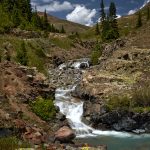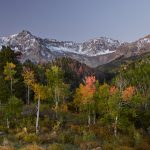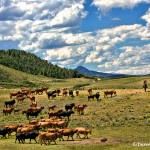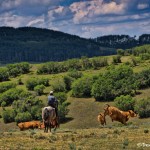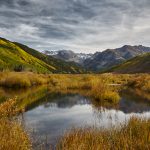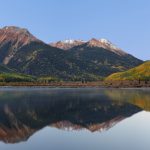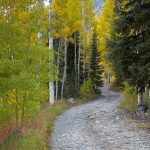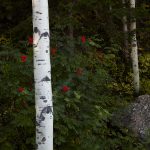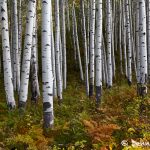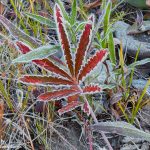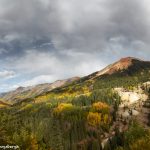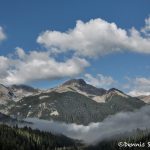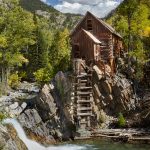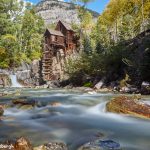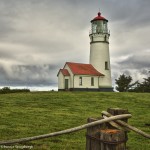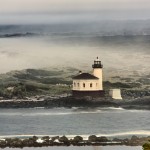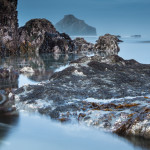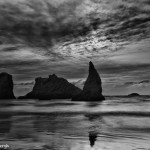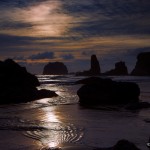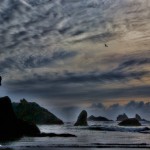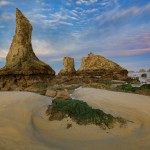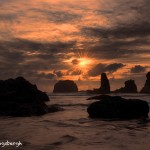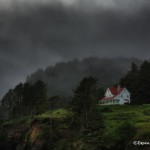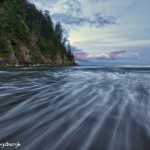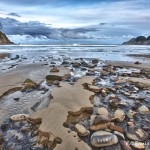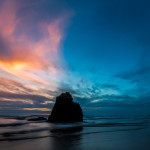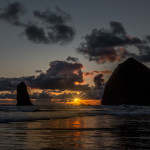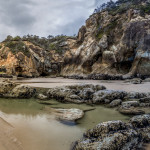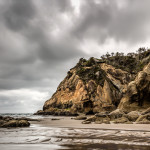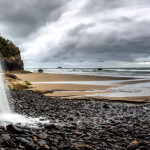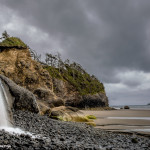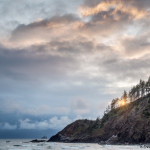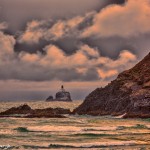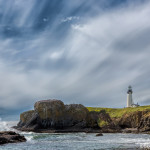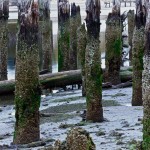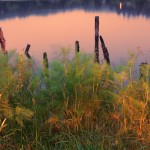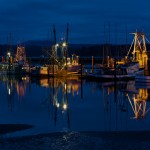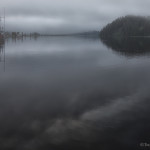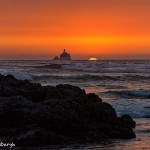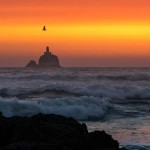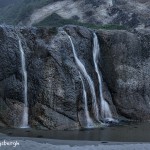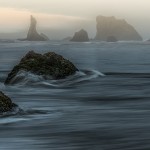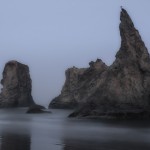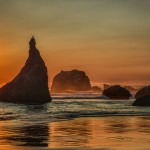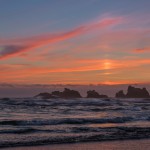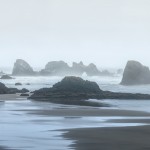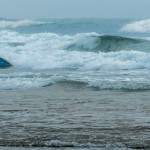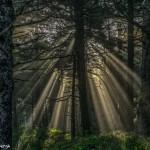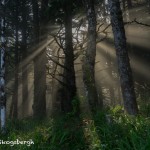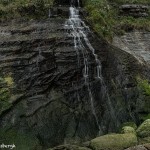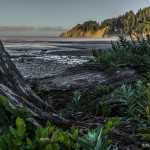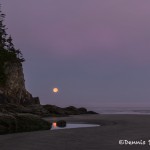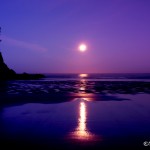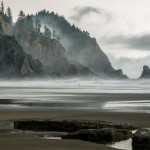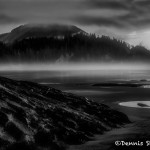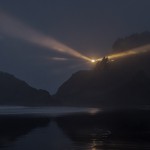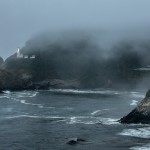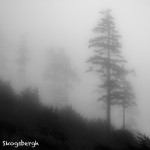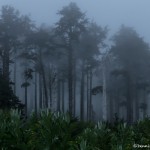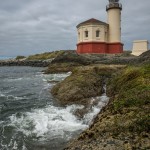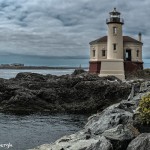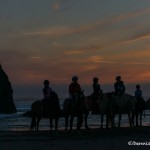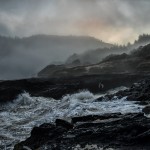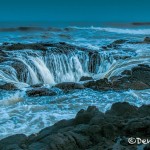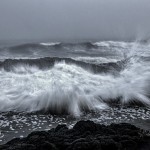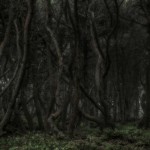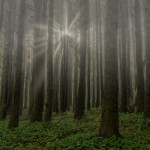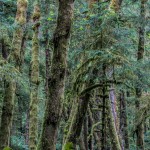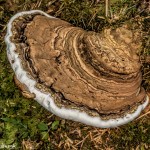26
Yosemite National Park has nice photographic options regardless of the season. Each season, however, has good points and bad points. The accessibility to Glacier Point and Tioga Pass is questionable in June and there may be lingering snow. The Valley is greening up with trees blooming and wildflowers out; furthermore, the water flow should be spectacular. All this before the explosion of crowds.
- 1813 June Storms, ‘Tunnel View’
- 1815 June Storm Clouds, Yosemite Valley
- 1822 Storm Clouds, ‘Tunnel View’, June
- 1818 Upper Yosemite Falls, June
- 1817 Upper Yosemite Falls, June
- 1103 Upper Yosemite Falls, June
- 2307 Upper Yosemite Falls
- 1106 Upper Yosemite Falls
- 2308 Lower Yosemite Falls, June
- 1811 Bridalveil Fall, June
- 1809 Bridalveil Fall from the ‘Tunnel View’, June
- 1111 Vernal Falls
- 1821 Merced River Downstream from Vernal Falls
- 1820 Nevada Falls, June
- 1816 Half Dome from Sentinal Bridge, June
- 1819 Sunset, Glacier Point, Half Dome
- 1812 Sunset, Half Dome, Glacier Point, June
23
The good and the bad. Glacier Point and Tioga Roads are closed during the winter months, but the Valley remains accessible by motor vehicle. Water levels may be low, but are usually still flowing. Snow may prevent hiking, but snow can create very special scenes for photography: developing and clearing storms, and the aftermath of newly fallen snow. These images were obtained the first week of February. Water flow was very good but after the first day there was no additional snow. Actually I have seen better snow during a November shoot.
- 4242 Tunnel View, Yosemite National Park
- 4242 Tunnel View, Yosemite National Park
- 4244 Valley View, Yosemite National Park
- 4245 Half Dome, Yosemite National Park
- 4252 Half Dome
- 4248 Yosemite Falls
- 4246 Yosemite Falls, Yosemite National Park
- 4248 Yosemite Falls from Swinging-Bridge
- 1069 Yosemite Falls, Winter
- 1070 Winter, Upper Yosemite Falls
- 1072 ‘Snow-cone’ Upper Yosemite Falls
- 4253 Winter, Lower Yosemite Falls
- 1807 Winter Evening, Half Dome and Valley from Columbia Point
- 4254 Sunset, Half Dome
- 1082 Evening, Half Dome
- 1078 Dusk, Alpenglow, Half Dome
- 2306 Moonlit Half Dome
- 4249 Sunrise, Catheral Rocks and Spires
- 4251 Sunset, El Capitan
- 4250 January Sunrise, El Capitan
- 1824 Horsetail Falls, February
- 1823 Bridalveil Fall
- 1079 Cascade Falls
- 1077 Cascade Falls
- 1075 Sunset, Fog, Looking West on Hwy 41
- 1806 Ice Pattern, January, Merced River
23
Fall in Yosemite can be a photographic bonanza. Unfortunately, by fall, there is low water flow and the possibility of closure of Glacier Point and Tioga Pass roads. But the Big-leaf maples, black oaks, Pacific dogwoods, and other deciduous trees should be very showy. And it’s not just the potential for autumn color change that highlights Yosemite’s classic views but the possibility of sudden stormy weather bringing cloud drama to surround the iconic Yosemite Valley.
- 1783 Autumn Colors, Merced River
- 1786 Autumn Colors, Merced River
- 1791 Autumn Colors, Merced River
- 1741 Merced River, Autumn Colors
- 1749 Autumn Colors, Merced River
- 1747 Autumn Color, Merced River
- 1784 Sunset, Half Dome, Merced River
- 1780 Autumn Colors, Pohono Bridge
- 1742 Lady Bug Scape, November
- 1779 Vernal Falls, November
- 1778 Stoneman Bridge, Half Dome
- 1785 ‘Tunnel View’
- 1740 Sunset, Valley View, Autumn Color
- 1755 Sunset, ‘Valley View’, Autumn Color
- 1745 November Sunset, El Capitan
- 1763 El Capitan, Fog, Autumn Color
- 1753 El Capitan, Autumn Color, Brewing Snow Storm
- 1777 Half Dome, Autumn Color, Recent Snow
- 1776 The ‘Three Brohers’, Fog, Recent Snow
- 1775 El Capitan, Autumn Color, Recent Snow
- 1772 ‘Valley View’, El Capitan, November Snow
- 1765 ‘Valley View’, November Snow
- 1764 Snow, Yosemite Valley
- 1762 Merced River, Snow Storm
- 1761 Pine Needles with Snow
- 1760 Half Dome, Yosemite Meadow, Winter Storm Clouds
- 6133 Foggy Morning View of Half Dome
- 1759 Autumn Color, Yosemity Meadow, Black Oak Trees, Fog
- 1758 Merced River, Autumn Color, Snowfall
- 1757 Yosemite Snow
- 1756 Snowing in Yosemite
- 1754 Yosemite Valley, Autumn Color, Clearing Storm Clouds
- 1752 ‘Tunnel View’, Recent Snowfall
- 1751 Half Dome, Autumn Color, Brewing Snow Storm
- 6137 Half Dome, Sunset
- 1750 The ‘Three Brothers’, November
- 1787 Autumn Colors, Tiogo Road
- 1746 Bridalveil Fall, Autumn
- 1744 Stary Night, Valley View
- 1743 Star Trails, Half Dome
- 1782 Mule Deer, Drink at Dusk
- 3028 Tioga Road Pass
- 3027 Merced Reflections
- 2967 Three Brothers, November
- 2948 Sunrise, Tunnel View, November
- 6135 Sunrise, Tunnel View
- 2966 Tunnel View
- 2951 Sunset, Glacier Point, November
- 2964 Sunset, Glacier Point
- 2963 Sunset, Glacier Point
- 6132 Sunset Panorama, Glacier Point
- 6134 Glacier Point, Yosemite National Park, November, CA
- 2954 Sunset, Mono Lake
- 6136 Sunset, Mono Lake
- 2958 Tufa Towers
- 2957 Half Dome, November
- 2956 November Colors
- 2949 Valley View, November
- 2965 El Capitan
- 2955 Stoneman Bridge
- 2954 El Capitan
- 2953 Merced Reflections, November
- 2952 Merced Reflections, November
- 2950 Bridalveil Fall, November
20
Layer after layer and ridge after ridge of forest straddles the border between North Carolina and Tennessee in Great Smoky Mountains National Park. It is renowned for wide diversity of plant and animal life, the beauty of its ancient mountains, Fall color change begins above 4,000 feet and progresses to lower levels. Peak color display at mid and lower elevations occurs between mid-October and early November and includes an amazing diversity of deciduous trees: sugar maple, scarlet oak, sweetgum, red maple, and hickory. These images were obtained at peak fall color change (October), and at the peak of the spring rebirth (May); 2012 and 2016 respectively.
- 5331 Cascade, Spring
- 5332 Cascade, Spring
- 5333 Cascade, Spring
- 5295 Greenbriar Cascade, Spring
- 5296 Greenbriar Cascade, Spring
- 5309 Tree Stump, Great Smoky Mountains National Park, TN
- 5314 Tree, Sam’s Creek, Spring
- 5335 Springtime Flowers
- 5316 Cascade, Spring
- 5315 Spring, Great Smoky Mountains National Park
- 5308 Cascade, Spring
- 5307 Cascade, Spring
- 5306 Cascade, Spring
- 5305 Cascade, Spring
- 5304 Cascade, Spring
- 5303 Cascade, Spring
- 5302 Cascade, Spring
- 5299 Cascade, Spring
- 5310 Cascade, Spring
- 5298 Spring, Rhododendron Creek Waterfall
- 5313 Spring, Rhododendron Creek Waterfall
- 5317 Cascade, Spring
- 5318 Cascade, Spring
- 5319 Cascade, Spring
- 5301 Jim Bales Historic Cabin, Spring
- 5300 Bales Cemetery
- 5321 Grist Mill, Cade’s Cove, Spring
- 5320 Grist Mill, Cade’s Cove
- 5351 Grist Mill, Cades Cove
- 5323 Carter Shield’s Cabin, Spring
- 5324 Cascade
- 5325 Cascade, Spring
- 5328 Cascade, Spring
- 5329 Waterfall, Spring
- 5327 Sunrise, Spring
- 5330 Sunrise, Spring
- 5322 Sunrise, Spring
- 5350 Sunrise, Spring
- 5349 Sunrise, Clingman’s Dome
- 5297 Sunrise, Clingman’s Dome
- 5312 Sunset, Clingman’s Dome
- 5311 Sunset, Clingman’s Dome
- 5334 Sunset, Clingman’s Dome, Spring
- 1699 Mingus Mill
- 1697 Mingus Mill
- 1722 Mingus Grist Mill
- 1694 Wooden Flume of Mingus Grist Mill
- 1700 Mingus Mill Spillover
- 1703 Autumn Color
- 1704 Autumn Color
- 1705 ‘Midnight Hole’, Big Creek
- 1706 Lynn Camp Prong Cascade with Autumn Color
- 1707 Lynn Camp Prong Cascades with Autumn Color
- 1708 Cascade with Autumn Color
- 1698 Autumn Color, Cascades
- 1709 Cascade and Autumn Color
- 1710 Autum Color
- 1711 Autumn Color
- 1712 Autumn Color
- 1713 Autumn Color
- 1714 Autumn Color
- 1717 Foggy Morning, Hyatt Lane
- 1718 Sunset, Spark’s Road
- 1719 Evening, Primitive Baptist Church, Cade’s Cove
- 1721 Autumn Color, Greenbriar
- 1724 Autumn, Greenbriar Stream
- 6088 Fall Color Water Reflections
- 1725 Roaring Forks (Alfred Reagan’s) Tub Mill
- 1726 Roaring Forks (Alfred Reagan’s) Tub Mill
- 1727 Autumn, Roaring Forks (Alfred Reagan’s) Tub Mill
- 1729 Mountain Stream
- 1695 November Sunrise, Clingman’s Dome
- 1696 November Dawn, Clingman’s Dome
- 1730 Sunset, Clingman’s Dome
- 1731 Sunset, Clingman’s Dome
- 1732 Sunset Color, Clingman’s Dome
- 1733 Sunrise, Clingman’s Dome
- 1715 Bud Ogle’s House
- 1716 Bud Ogle’s Grist Mill
- 1728 Bud Ogle’s Grist Mill
- 1734 Noah ‘Bud’ Ogle’s Cabin
- 1735 Inside Noah ‘Bud’ Ogle’s Cabin
- 1736 Autumn Color
- 1737 Cascades and Autumn Color
- 1738 Wagon Wheel, Cade’s Cove
- 1739 Grist Mill, Cade’s Cove
- 1720 Grist Mill, Cade’s Cove
- 1740 Grist Mill, Cade’s Cove
26
The San Juan Mountains represent the most extensive mountainous region of the Rocky Mountains – rugged, remote and wild. They lie in southwest Colorado and contain 328 peaks over 13,000 feet, 14 over 14,000. Undoubtedly they are Colorado’s finest mountain range with unsurpassed beauty and enough peaks, lakes, waterfalls, and open meadows to nourish one’s mountain climbing, 4-wheeling, backpacking and photography desires. Add in ghost mining towns and hopefully some wildflowers and the photographer’s venue is complete. Our trip to the San Juans (and other locations including the Maroon Bells) in July of 2012 lacked the typical volume of wildflowers, but the weather was great and the scenery was beautiful.
- 5345 Sunrise
- 5343 Sunrise, Maroon Bells,
- 7241 Maroon Bells
- 5346 Maroon Bells
- 7242 Maroon Bells
- 5344 Maroon Bells
- 1432 July, Yankee Boy Basin
- 1431 July, Yankee Boy Basin
- 7273 Yankee Boy Basin
- 7272 Road to Yankee Boy Basin
- 5342 Bridal Veil Falls
- 7240 Autumn Colors
- 7239 Sunset, Mt. Sneffles
- 7245 Sunset
- 7270 Sunset, Mt. Sneffels Wilderness Area
- 7268 Sunset, Mt. Sneffels Wilderness Area
- 7269 Sunset, Mt. Sneffels Wilderness Area
- 7267 North Clear Creek Falls
- 9265 South Clear Creek Falls, Near Creedo, CO
- 9266 South Clear Creek Falls
- 7249 Capitol Peak
- 7258 Autumn, San Juan Mountains
- 7259 Autumn, San Juan Mountains, CO
- 7264 San Juan Mountains
- 7246 Autum Sunrise
- 7248 Autum, Dallas Divide, CO
- 7250 Autum, Dallas Divide
- 7252 Autumn
- 1406 Cowboys Driving Cattle
- 1405 Cowboy Driving Cattle
- 7247 Autum, San Juan Mountains
- 7251 Crystal Lake
- 7260 Autumn Colors, San Juan Mountains
- 7262 Autumn Colors, San Juan Mountains
- 7261 Autumn Colors, San Juan Mountains
- 7263 Autumn Colors, San Juan Mountains
- 7254 Autumn, Frost
- 7253 Autumn, Red Mountain Pass
- 1402 Road to Crystal Lake
- 5338 Waterfall
- 5341 Morning Fog
- 7256 Crystal Mill
- 7257 Crystal Mill
19
- 3278 Northern Oregon Coast
- 3256 Northern Oregon Coast
- 1220 Cape Blanco Lighthouse
- 1273 Mid-afternoon
- 1221 Cape Blanco Lighthouse
- 3253 Cape Blanco
- 1222 Coquille River Lighthouse
- 1223 Coquille River Lighthouse
- 3250 Umpqua Lighthouse
- 1227 Umpqua Lighthouse, spiral staircase
- 1237 Inside the lamp room
- 1224 Sunrise
- 3252 Bandon Beach, OR
- 3251 Sunset, Bandon Beach
- 1259 Sunset, Bandon Beach
- 3244 Sunset, Bandon Beach
- 1257 Sunset, Bandon Beach
- 1225 Sunrise
- 1238 Sunset
- 1233 Heceta Head Beach, Yachatas, OR
- 1239 Evening, Fog, Heceta Head Beach
- 1234 Days End
- 1242 Sunrise
- 1243 Morning, Smuggler’s Cove.
- 3246 Sunset, Hug Point
- 3255 Sunset, Hug Point
- 3283 Sunset, Haystack Rock
- 3241 Hug Point
- 3243 Hug Point
- 3242 Hug Point
- 3245 Hug Point
- 3282 Sunset, Indian Beach, Tillamook Rock Lighthouse
- 1262 Indian Beach, Tillamook Rock Lighthouse.
- 3254 Yaquina Head Lighthouse.
- 1230 Yaquina Bay Harbor
- 1228 Early Morning, Riverside Foliage
- 1231 Pre-dawn
- 3247 Pre-dawn, Yaquina Bay Harbor
- 3248 Pre-dawn, Yaquina Bay Harbor
- 5175 Pre-dawn Yaquina Bay Harbor
- 3277 Newport Harbor
- 3249 Siuslaw River Bridge
- 5174 Yaquina Head Lighthouse
- 3257 Canon Beach
- 1241 Black Oyster Catcher
- 3630 Boat, Yaquina Bay Harbor
- 5170 Sunset, Indian Beach
- 3629 Sunset, Indian Beach
- 5173 Sunset, Indian Beach
- 3628 Morning Fog, Hug Point
- 5169 Waterfall, Hug Point, Oregon
- 3627 Fog, Bandon Beach
- 3626 Fog, Bandon Beach
- 3537b Sunset, Bandon Beach
- 3663 Sunset, Bandon Beach
- 3605 Sunset, Bandon Beach
- 3625 Sunset, Bandon Beach
- 3624 Cape Blanco
- 3623 Foggy Indian Beach
- 3622 Surfer, Smuggler’s Cove
- 3620 Crepuscular Rays (‘God Beams’)
- 5171 Sunrise, Crepuscular Rays (God Beams)
- 3621 Waterfall, Smuggler’s Cove
- 5172 Sand Patterns, Smuggler’s Cove
- 3619 Smuggler’s Cove
- 3747 Smuggler’s Cove
- 5168 Trail to Smuggler’s Cove
- 5166 Dawn, Setting Moon, Smuggler’s Cove
- 5167 Early Dawn, Smuggler’s Cove
- 3595 Smuggler’s Cove
- 5149 Smuggler’s Cove
- 3617 Cook’s Chasm
- 3515 Siuslaw River Bridge
- 5614 Siuslaw River Bridge
- 3612 Heceta Head Lighthouse
- 5340 Heceta Head Lighthouse
- 3611 Heceta Head Lighthouse
- 3659 Heceta Head Lighthouse
- 3664 Heceta Head Lighthouse
- 5150 Foggy Morning, Indian Beach
- 3610 Fog
- 3596 Foggy Moonscape, Seastacks
- 3607 Coquille River Lighthouse
- 3606 Coquille River Lighthouse
- 3604 Sunset, Bandon Beach
- 5177 Sunset, Bandon Beach
- 3603 Oregon Coast, Cape Perpetua
- 5151 Thor’s Well
- 51521 Thor’s Well
- 3661 Thor’s-Well
- 3601 Yaquina Head Lighthouse
- 3600 Trees
- 3660 Foggy Morning
- 3598 Ecola State Park
- 3599 Tide Pool Inhabitants
- 3597 Ganoderma applanatum
- 3608 Water Lillies


